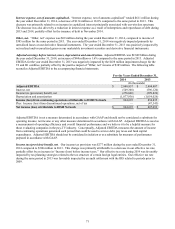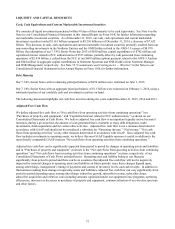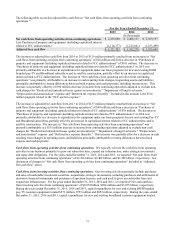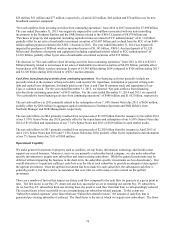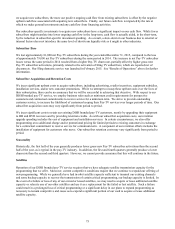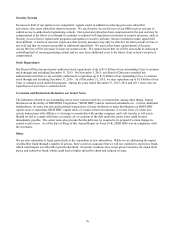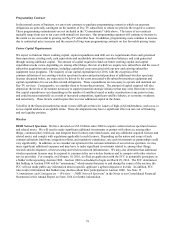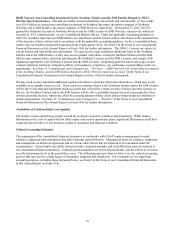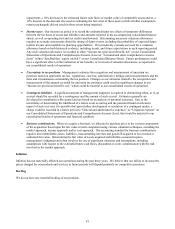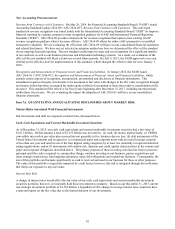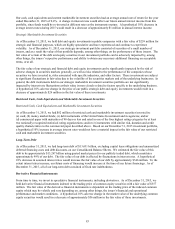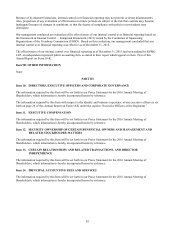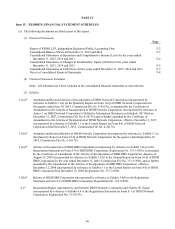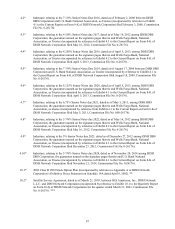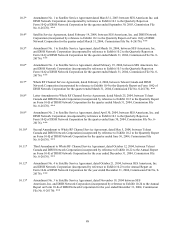Dish Network 2015 Annual Report Download - page 91
Download and view the complete annual report
Please find page 91 of the 2015 Dish Network annual report below. You can navigate through the pages in the report by either clicking on the pages listed below, or by using the keyword search tool below to find specific information within the annual report.81
impairment, a 10% decrease in the estimated future cash flows or market value of comparable assets and/or, a
10% increase in the discount rate used in estimating the fair value of these assets (while all other assumptions
remain unchanged) did not result in these assets being impaired.
x Income taxes. Our income tax policy is to record the estimated future tax effects of temporary differences
between the tax bases of assets and liabilities and amounts reported in the accompanying consolidated balance
sheets, as well as operating loss and tax credit carryforwards. Determining necessary valuation allowances
requires us to make assessments about the timing of future events, including the probability of expected future
taxable income and available tax planning opportunities. We periodically evaluate our need for a valuation
allowance based on both historical evidence, including trends, and future expectations in each reporting period.
Any such valuation allowance is recorded in either “Income tax (provision) benefit, net” on our Consolidated
Statements of Operations and Comprehensive Income (Loss) or “Accumulated other comprehensive income
(loss)” within “Stockholders’ equity (deficit)” on our Consolidated Balance Sheets. Future performance could
have a significant effect on the realization of tax benefits, or reversals of valuation allowances, as reported in
our consolidated results of operations.
x Uncertainty in tax positions. Management evaluates the recognition and measurement of uncertain tax
positions based on applicable tax law, regulations, case law, administrative rulings and pronouncements and the
facts and circumstances surrounding the tax position. Changes in our estimates related to the recognition and
measurement of the amount recorded for uncertain tax positions could result in significant changes in our
“Income tax provision (benefit), net,” which could be material to our consolidated results of operations.
x Contingent liabilities. A significant amount of management judgment is required in determining when, or if, an
accrual should be recorded for a contingency and the amount of such accrual. Estimates generally are
developed in consultation with counsel and are based on an analysis of potential outcomes. Due to the
uncertainty of determining the likelihood of a future event occurring and the potential financial statement
impact of such an event, it is possible that upon further development or resolution of a contingent matter, a
charge could be recorded in a future period to “General and administrative expenses” or “Litigation expense” on
our Consolidated Statements of Operations and Comprehensive Income (Loss) that would be material to our
consolidated results of operations and financial condition.
x Business combinations. When we acquire a business, we allocate the purchase price to the various components
of the acquisition based upon the fair value of each component using various valuation techniques, including the
market approach, income approach and/or cost approach. The accounting standard for business combinations
requires most identifiable assets, liabilities, noncontrolling interests and goodwill acquired to be recorded at
estimated fair value. Determining the fair value of assets acquired and liabilities assumed requires
management’s judgment and often involves the use of significant estimates and assumptions, including
assumptions with respect to the estimated future cash flows, discounted at a rate commensurate with the risk
involved or the market approach.
Inflation
Inflation has not materially affected our operations during the past three years. We believe that our ability to increase the
prices charged for our products and services in future periods will depend primarily on competitive pressures.
Backlog
We do not have any material backlog of our products.


